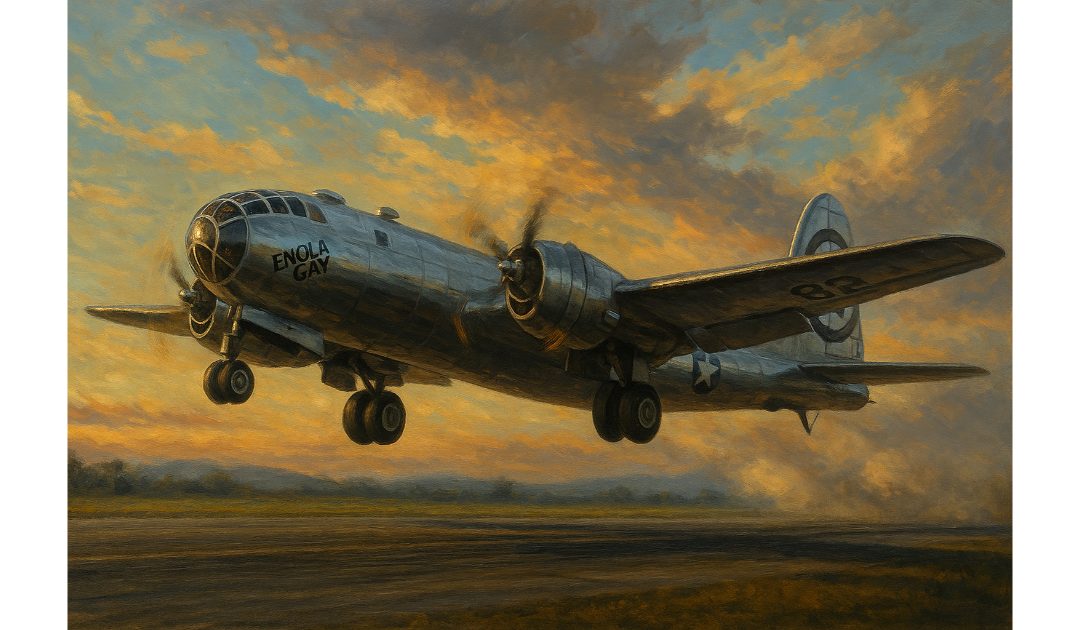Hiroshima
I have written about World War II several times. My father fought in North Africa, Italy, and Normandy. On the 6th of August, 1945, Enola Gay dropped the first atomic bomb on Hiroshima.
The atomic bomb, code-named “Little Boy,” was developed as part of the top-secret Manhattan Project, a massive scientific and military undertaking during World War II. The project brought together some of the brightest minds in physics, including Robert Oppenheimer, who is often referred to as the “father of the atomic bomb.” The bomb utilised uranium-235 and employed a gun-type design to initiate a nuclear chain reaction, releasing an immense amount of energy in the form of heat, blast, and radiation.
The decision to deploy the atomic bomb was made by the United States under President Harry S. Truman. The primary objective was to hasten the end of World War II by compelling Japan to surrender unconditionally. Despite extensive firebombing campaigns that devastated numerous Japanese cities, the Japanese government showed little inclination towards capitulation. It was believed that an overwhelming demonstration of power might force a swift conclusion to the conflict and potentially save lives that would otherwise be lost in a prolonged war or a ground invasion of Japan.
At 8:15 a.m. local time, the American B-29 bomber Enola Gay, piloted by Colonel Paul Tibbets, released “Little Boy” over Hiroshima. The bomb detonated approximately 600 metres above the city, unleashing a blinding flash of light, followed by a massive shockwave and a fireball that reached temperatures of several million degrees Celsius. The immediate impact was catastrophic—an estimated 70,000 to 80,000 people were killed instantly, and countless others suffered severe burns, injuries, and radiation sickness.
Hiroshima, a bustling city of about 350,000 inhabitants, was chosen due to its military significance, hosting key army headquarters and industrial facilities. The bomb obliterated nearly everything within a two-kilometre radius. Buildings were flattened, infrastructure reduced to rubble, and fires raged uncontrollably, turning the city into a scorched wasteland. Survivors, known as hibakusha, described scenes of unimaginable horror—charred bodies, people with skin hanging in tatters, and others desperately seeking water amidst the devastation.
The long-term effects of the atomic bombing extended far beyond the initial destruction. Radiation exposure led to acute health problems, including severe burns, radiation sickness, and increased cancer rates among survivors. Many hibakusha endured lifelong physical and psychological trauma, as well as societal stigma due to misunderstandings about radiation exposure.
Three days after the bombing of Hiroshima, on the 9th of August, 1945, a second atomic bomb, “Fat Man,” was dropped on Nagasaki, causing further devastation and loss of life. These bombings, coupled with the Soviet Union’s declaration of war against Japan, ultimately compelled Japan to surrender on the 15th of August, 1945, effectively ending World War II.
The bombings of Hiroshima and Nagasaki sparked global debates on the morality, necessity, and consequences of using nuclear weapons. Advocates argue that the bombings hastened Japan’s surrender, potentially saving millions of lives that might have been lost in an extended conflict. Critics, however, contend that Japan was already on the brink of surrender and that alternative means could have been employed to achieve the same outcome without resorting to such catastrophic measures.
In the post-war years, Hiroshima became a symbol of peace and resilience. The Hiroshima Peace Memorial Park, including the iconic Atomic Bomb Dome, serves as a poignant reminder of the horrors of nuclear warfare and a call for the abolition of nuclear weapons. Annual ceremonies held on the 6th of August honour the victims and promote a message of peace, urging the world to remember the past and work towards a future free from the threat of nuclear annihilation.
The dropping of the first atomic bomb on Hiroshima remains one of the most significant and sobering events in human history. It not only marked the culmination of scientific achievement and wartime strategy but also highlighted the profound ethical responsibilities that come with technological advancement. As the world continues to grapple with the legacy of Hiroshima, it serves as a stark reminder of both humanity’s capacity for destruction and its enduring hope for peace.

